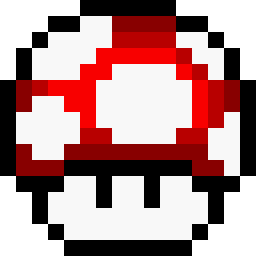2025-04-23
Worth fighting for
This review was originally published in March 2015. We're updating and republishing it to mark the arrival of the game in the Nintendo Switch Online Game Boy Advance library.
While Fire Emblem is a franchise with a long history in Japan, its track record in the West is far more condensed; in fact, Fire Emblem: The Sacred Stones on Game Boy Advance was only the second series entry to arrive in North America and Europe. The first Western arrival is also available via Nintendo Switch Online (and previously on the Wii U eShop and on 3DS via the Ambassador Program), meaning that there's a useful opportunity to become fully acquainted with the early days of the IP's presence outside of Japan.
For those familiar with the predecessor or even the excellent Fire Emblem: Awakening on 3DS, much here will be instinctive - we still have a rock-paper-scissors wheel of effectiveness for weapons, turn-based strategy, and plenty of nuance in between. The bedrock of the franchise is in polished mechanics, which Intelligent Systems had mastered by this stage - the challenge always feels balanced, with three difficulty levels helping those looking for a light or full-on undertaking.
Mastering different unit types is integral to progress, not just in terms of strategically targeting enemies but also taking care of a host of factors. Weapons are finite and need to be managed by acquiring — through discovery or purchasing — replacements, and this title also introduces the concept of Support roles, engaging conversations between characters to boost their affinity and improve their teamwork. Every move matters, whether it's polishing off an enemy with a ranged attack, healing a struggling teammate, or simply rescuing them and taking them off the battlefield. There's plenty to think about.
Unlike its more modern series entries, it's worth noting that permadeath is a non-optional part of this experience. Whereas you could disable this in Awakening, here you're left with the horrifying potential to lose characters for good. Depending on your difficulty setting, this can be the result of one slight error, such as carelessly putting a unit in range of multiple enemies, so it's imperative that you think carefully about your moves.
Beyond the core battles that form the Chapters of the storyline, this was an entry that did push the series forward in comparison to its GBA predecessor, too. There's an overworld map that can be traversed as you see fit, once you unlock areas, which is handy for stocking up on goods or even tackling some optional monster-slaying challenges. The setting of Magvel, a land mass with multiple nations, certainly becomes more important in the mind's eye with this overworld perspective, which was an advance for the series at the time.
In terms of the storyline itself, we rather enjoyed it, and there are even divergent paths in which you choose to tackle a handful of chapters focused on main protagonists Eirika or Ephraim; making use of restore points or multiple save files in the Wii U / NSO versions should mean that you can see all of the chapters without necessitating multiple playthroughs; it's a neat touch.
The localised text is somewhat earnest and simplistic, but that's understandable considering the format - despite that, we encounter complex topics such as the cruelty of war, familial loyalty, courage, and fear. The powerful force of the enemy's invasion across the continent and the high stakes in rescuing the titular 'Sacred Stones' is a tale well told.
Moving onto presentation, we also consider this to be a Game Boy Advance title relatively well suited to larger screens. Its chunky, colourful pixels look rather attractive on the GamePad and Switch, but also stand up well on a TV. The art style is rather well done, and it's not uncommon for modern indie efforts to deploy similar 'retro'-style visuals. For a portable game that's decades old, this stands up relatively well.
It's also limited by its time, of course, and while this isn't a criticism or a factor in the score, it's worth mentioning that navigation and the overall user interface isn't the intuitive joy that fans of Awakening enjoyed. The single-screen Game Boy Advance necessitated a deeper layering of menus, so this takes some getting used to.
Conclusion
Fire Emblem: The Sacred Stones should certainly be on the download shortlist for fans of the franchise or strategy games in general. Its predecessor — the first entry released internationally — is a thoroughly worthwhile introduction to some iconic characters in the series, but Sacred Stones holds its own in setting and plot, while featuring some feature advances. Another terrific GBA title worth catching up with.
Source: Nintendolife.com
